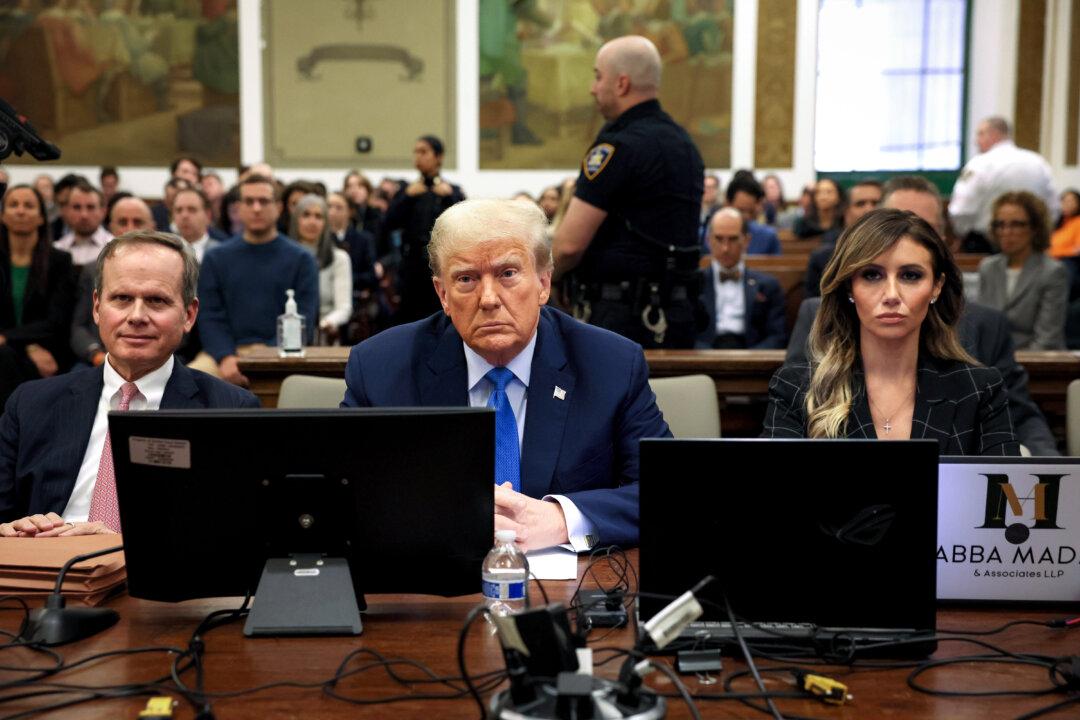After the end of World War II, the United States spent trillions of dollars containing the Soviet Union. But after the Cold War, it was discovered that the United States had overestimated the power of its 40-year nemesis. It turned out that the USSR’s economy was only about half the size that the CIA and other agencies had said that it was.
Could that be the case with China as well?
The Measuring Method Matters
No one has accurate financial numbers regarding China’s economic output, least of all the Chinese Communist Party (CCP). If we simply took the CCP at its word, China’s economy is at parity with that of the United States. That’s exactly what the CCP wants and actually needs its citizens to believe.But the CCP has every incentive to lie. After all, its claim to legitimacy is directly linked to economic prosperity. Without that, all political legitimacy is in jeopardy. That explains China’s oppressive and Orwellian social-credit system and other aspects of China’s very sophisticated and brutal surveillance state.
Growing Reliance on Foreign Resources
Without the price mechanism to determine the market value of goods and services, the value of things in a command economy becomes arbitrary. Such an economy based on political favoritism instead of market forces becomes distorted, inefficient and ultimately unsustainable. With its contracting consumer economy, a massive debt-to-GDP ratio and growing food supply problems from loss of arable land, African swine fever epidemic and with the armyworm threatening its crops, China faces growing dependence on foreign natural resources as well as for food.China’s Enigmatic OBOR
That’s why China’s One Belt, One Road (OBOR, also known as Belt and Road) initiative is so enigmatic. It’s one of the broadest, most sweeping international economic development plans in history. Certainly, it indicates China’s growing economic power.But it may actually be quite the opposite. China’s economy has the appearance of a wealthy capitalist country with its formidable transformation, including a middle class and technological acumen. But a closer look reveals some very critical contradictions.
For example, where is the capital in this “capitalist” society? And where is the power growing and where is it diminishing?
Sustaining the CCP Is Top Priority
The truth is, China’s economic strength not only is less than what most estimates say it is, but it is much worse. According to night time electricity usage analysis, China’s GDP is inflated by 30 percent or more in various cities and regions. That shouldn’t be happening in the world’s most dynamic economy.That dynamism exists at the lower levels of the economy until the CCP steps in to steal the value. Once the state takes ownership of a profitable enterprise, the value is sucked out of it via ever-larger loans by state-owned banks, enriching the new CCP owners as it destroys the indebted enterprise. This is how China finds itself burdened by an unsustainable 3:1 debt-to-GDP ratio.
Huawei to Deliver Technology Secrets?
However, the broader plan goes beyond those two very important missions. In order to dominate the West technologically, it must have ongoing access to high-level technology and manufacturing techniques. Since 1980, it has acquired both by theft and forced transfers. The plan going forward is to use the access to all transmitted data that the Huawei, ZTE and other telecommunications equipment provides to simply steal technological secrets.Europe Now Wary of Huawei
But that plan is now in jeopardy as the European Union questions the wisdom of using Huawei and other China telecom providers. A nonbinding resolution sponsored by Reinhard Butikofer (a member of the EU Parliament’s China delegation) in March 2019 calls for multiple equipment vendors, a phased rollout of 5G technology and adherence to strict cyber defense protocols. A ban on Huawei equipment isn’t part of the resolution, but it hasn’t been ruled out, either.Inevitable Crash Coming Sooner than Later
The overwhelming causes of China’s economic troubles stem from the CCP’s destructive policies, which are primarily about keeping the CCP in power and destroying the economies of the West. Importantly, China’s stormy economic conditions are not due to Trump’s tariffs—they have not yet come into full force, though they do provide a convenient excuse for Chinese leader Xi Jinping.Still, the CCP’s biggest fear–other than their own citizens—is Trump’s leadership in putting tariffs on Chinese goods. An EU tariff plan may well be coming next. Either or both will put additional pressure on the Chinese leadership to deliver on their promise of prosperity to the Chinese people. The CPP is finding it difficult to deliver on that promise and that will likely continue.
As economic hardship and civil unrest grow in China, the CCP will continue to crack down on its citizenry. The unexpected rise of Trump and the expanding trade war against China may well mean that the CCP will face a day of reckoning sooner than later.






Friends Read Free